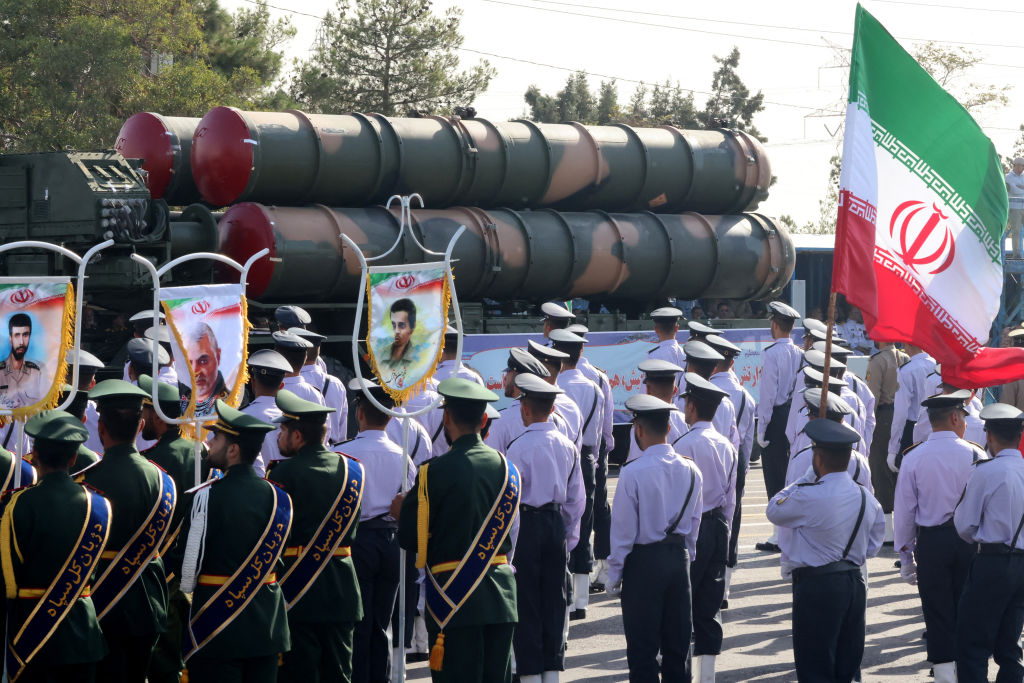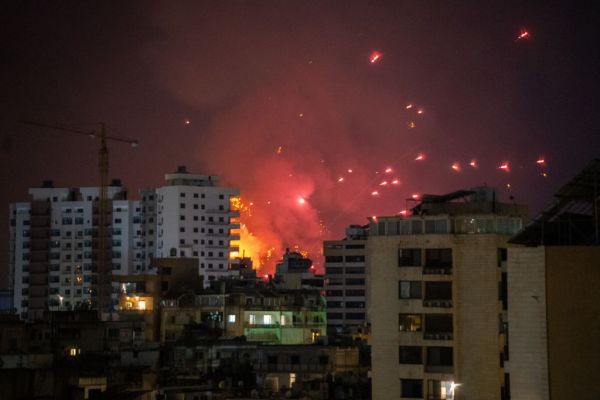Early Saturday morning, Israel carried out long-awaited strikes on Iran in response to its October 1 ballistic missile attack. The tightly choreographed aerial operation involved the hours-long deployment of more than 100 warplanes, including F-35 stealth bombers, deep into enemy territory.
In the first wave, fighter jets destroyed air defense systems in Syria and Iraq to blind the Iranian military to incoming attacks. In the subsequent sorties, they struck aerial defenses and weapons production sites in at least three provinces across Iran, hitting targets from both outside and within Iran’s airspace.
Though the operation avoided Iran’s sensitive nuclear and oil facilities, Israeli officials say it demonstrated the air force’s ability to target sites in the heart of the Islamic Republic. Perhaps more importantly, it cleared the way for future attacks by eroding the country’s defensive and offensive capabilities. “We drew upon only some of our abilities,” Israel Defense Forces Chief of Staff Lt. Gen. Herzi Halevi said from the military headquarters in Tel Aviv on Sunday. “We have the ability to do much more.”
Israeli Defense Minister Yoav Gallant on Monday likened the aerial operation to the opening salvo of the Six-Day War in 1967, in which preemptive Israeli attacks on Egypt’s air force led to a decisive victory by Jerusalem. The strikes were “a proof of ability” and “a very accurate hit on the radars and the air defense systems” that “creates a big disadvantage for the enemy when we want to attack later,” he added.
Assaf Orion“Russia does not have an abundance of these systems given the war in Ukraine, so it might open a gap in the long-range air defenses in Iran for some time.”
That all of Israel’s fighter pilots came home safely after operating over enemy territory is an achievement in itself, analysts say. But what they hit is equally meaningful. In addition to degrading Iran’s ballistic missile production capabilities, the attack destroyed four S-300 air defense batteries protecting Tehran and its energy and nuclear sites. The strikes inflicted “tremendous damage,” a member of Israel’s air force told The Dispatch, leaving Iran “naked and exposed” to future attacks.
And it could be some time before the Islamic Republic recoups its air defense capabilities. Given Iran’s aging air force and disjointed array of air defenses, Russian-made S-300s had served as the country’s most effective protection from long-range threats. Together with an Israeli strike in April against an S-300 system near Natanz, which hosts important nuclear sites, Saturday’s attacks mean that large swaths of Iranian territory are now vulnerable to aerial attack—the likes of which Iran hasn’t seen since its war against Iraq in the 1980s.
“Russia does not have an abundance of these systems given the war in Ukraine, so it might open a gap in the long-range air defenses in Iran for some time,” said Assaf Orion, a retired Israeli brigadier general who is now a senior fellow at the Washington Institute for Near East Policy. As Kyiv ramps up its long-range aerial attacks into Russian territory, Ukrainian military officials have claimed to have targeted S-300s.
Going forward, Orion added, “Iran will need to really calculate what it does in response. Iran can still launch attacks at Israel, but Israel can clearly operate in Iran, over Iran, on the road to Iran without Iran being able to stop it.”
Iran will also need to reassess its own offensive capabilities when deciding whether to continue the cycle of escalation. The regime’s sweeping aerial attack in April demonstrated that ballistic missiles are its most effective weapon after Israel and a U.S.-led regional coalition intercepted hundreds of slow-moving drones and cruise missiles before they ever reached Israeli air space. Tehran adjusted accordingly in its October 1 attack, launching nearly 200 missiles at Israel to greater effect.
Israel’s latest attack, while sparing Iran’s ballistic missile stockpiles, damaged its ability to restock the weapons by destroying the mixers used to produce their solid fuel. And restocking that equipment could take more than a year, Axios reported Saturday. U.S. officials have assessed that while the Islamic Republic is still capable of carrying out an attack on par with its October 1 barrage, it will likely be mindful of its ability to restock going forward.
Iranian state-run media initially downplayed the strikes, while officials emphasized the country’s right to retaliate but stopped short of vowing a counterattack. But even with its offensive and defensive capabilities impaired, the rhetoric out of Tehran has since hardened. Hossein Salami, the head of Iran’s Islamic Revolutionary Guard Corps, warned Monday that Israel faces “bitter” and “unimaginable” consequences. “Another Storm is Coming,” read a large Hebrew mural erected in Tehran’s Palestine Square.
Should Iran launch another direct attack against Israel, the White House says it’s prepared to aid in its ally’s defense. “We will be ready, and there will be consequences for Iran once again. However, we do not want to see that happen,” a senior administration official told reporters Friday night. “This should be the end of this direct exchange of fire between Israel and Iran.”
For Washington, Saturday’s attack stayed within the guardrails it set—privately and publicly—for Israel as the Jewish state weighed its response to Iran this month. It neither targeted Iranian oil facilities, which could have driven up petroleum prices, nor did it hit operational nuclear sites. “This retaliation, whether it was the Americans or the Israelis who made the decision, very much fit within the paradigm” of demonstrating “geopolitical manhood” while avoiding a full-out escalation, Jeremy Shapiro, director of research at the European Council on Foreign Relations, told The Dispatch.
But it also paved the way for future strikes and demonstrated to Iran that Israeli warplanes can operate in and around its airspace with near-impunity—a feat that Eyal Pinko, an expert on Iran and a former senior official with Israel’s intelligence services, described as “limited” but psychologically impactful for Iranians. “We used to be upset that we don’t have the Iron Dome,” one Iranian tweeted as the strikes unfolded, “but now we’ve realized that we don’t even have a siren” for air raids.
An exposed Iranian regime could be a more dangerous one, though. Tehran’s regional proxies have been significantly degraded, but they still retain some long-range and precision-guided munitions that could be deployed simultaneously in an effort to inflict widespread damage to Israeli infrastructure.
Experts also fear the Islamic Republic may make a dash for a nuclear weapon in President Joe Biden’s lame-duck period, particularly if faced with the prospect of another term with Donald Trump in the White House. The regime expects the former president to take a more aggressive tack than a Democratic administration would and, given Israel’s ongoing operations in Lebanon to disarm Hezbollah, may see the bomb as its last and only insurance policy.
“For the first time since the 1980s, Iran is being struck from the outside on a wide scale, openly, so they must consider their deterrence posture,” Orion told The Dispatch. “They lost Hamas. They lost Hezbollah as an effective deterrent. Iran’s defense architecture and strategy has just collapsed.”






Please note that we at The Dispatch hold ourselves, our work, and our commenters to a higher standard than other places on the internet. We welcome comments that foster genuine debate or discussion—including comments critical of us or our work—but responses that include ad hominem attacks on fellow Dispatch members or are intended to stoke fear and anger may be moderated.
With your membership, you only have the ability to comment on The Morning Dispatch articles. Consider upgrading to join the conversation everywhere.